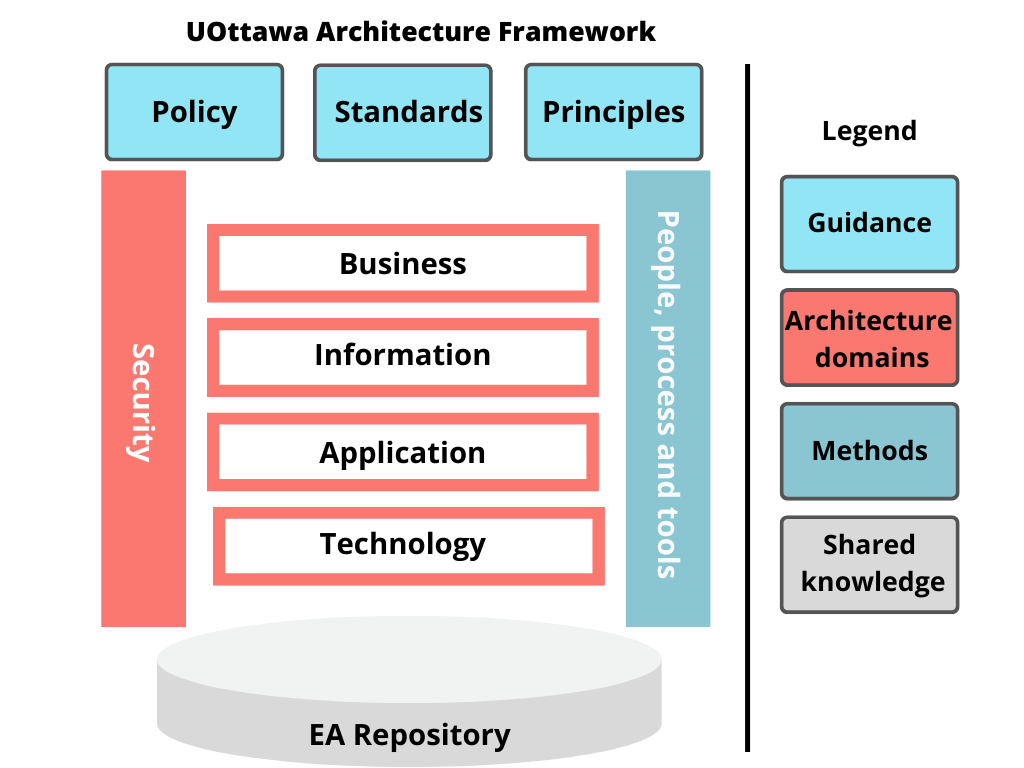Ultimately, with the uOttawa Framework, we will be answering theses questions:
• Are we doing the right things?
• Are we doing them the right way?
• Are we getting them done well?
• Are we getting the expected benefits?
IT Framework & Standards
To ensure that we assess, align, and organize all those business objectives with requirements and strategies, we need to build a solid Enterprise Architecture Framework.
How is the University of Ottawa supporting IT Standards?
In order to provide prescriptive guidance, and support investment decision making at uOttawa, a standards framework will be included within the enterprise architecture method that is recommended to guide solution planning. This means that under the management of the Office of the CIO, the Architecture Working Group (AWG) will support:
- A centralized repository where all information regarding IT standards is contained.
- Guidance on how to request, develop, manage, and measure the usage and conformity of IT standards.
- The inclusion and engagement of all uOttawa stakeholders in the vetting of IT standards.
- A model driven by needs versus attempting to have exhaustive coverage across the entire IT domain
First Steps
To ensure that we assess, align, and organize all those business objectives with requirements and strategies, we need to build a solid Enterprise Architecture Framework. The University has put great effort to establishing it.
There are many Framework models existing throughout industries and the public sector, such as: Zachman, TOGAF, SAFe, and Federal Enterprise Architecture (FEA) - all have their advantages / disadvantages and it is never narrowed down precisely to the reality of an organization. However it is a good practice to consult them and use different models to build our own organizational model.
For Uottawa, the goal was to increase maturity of the architecture planning while decreasing unnecessary demands to projects, processes and resources, so the final choice was to prioritize a lightweight framework.
The framework is used as guidance for uOttawa strategy to further mature investment governance by supporting business capability-driven planning, application portfolio rationalization, and the lifecycle management of technology assets driven by standards and best practices.
Typically, an Enterprise Architecture Framework has the following characteristics:
- A common language to describe the architecture.
- An architecture description that describes the relationship between the architecture domains to investments and performance.
- Effective methods, tools and guidance for developing actionable architecture deliverables.
- Governance and communication.
